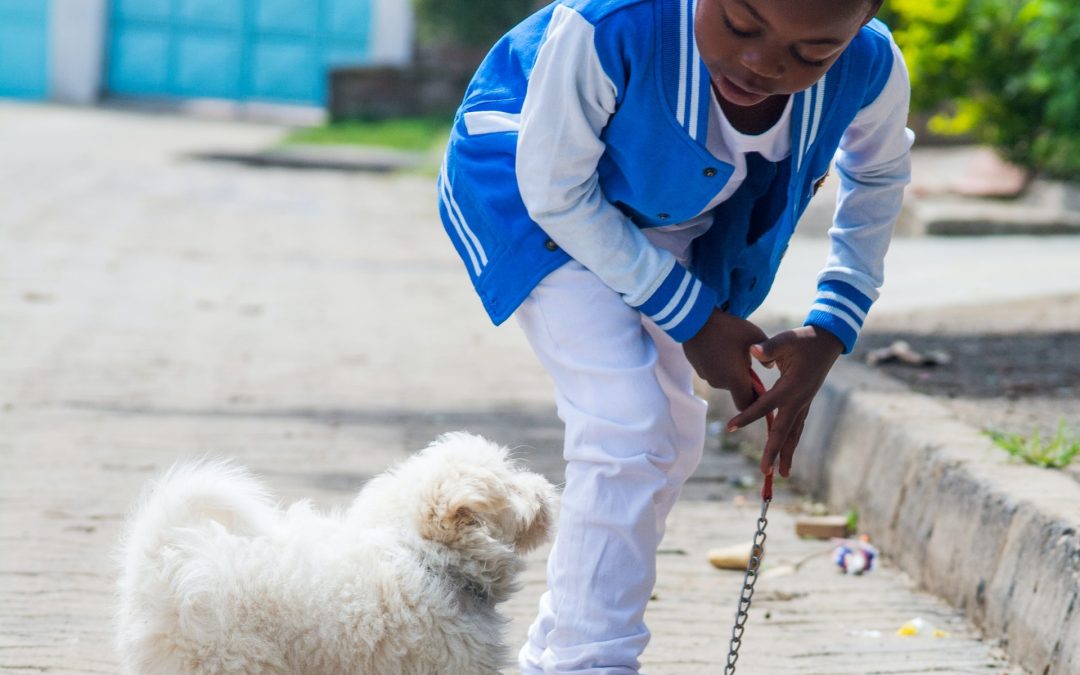Choosing a family dog is an exciting decision, but it’s important to choose a dog that will be a good fit for your family and lifestyle, especially if you have young children. A dog can be a wonderful addition to a family, providing companionship, love, and joy. However, it’s crucial to consider factors such as temperament, size, energy level, and trainability when choosing a family dog. Here are some tips to help you choose a family dog with young children.
Consider the temperament: The temperament of a dog is one of the most crucial factors to consider when choosing a family dog, especially with young children. Look for breeds known for their gentle, patient, and tolerant personalities. Golden Retrievers, Labrador Retrievers, and Beagles are great examples of breeds known for their friendly and gentle temperaments. However, it’s important to remember that each dog is an individual, and personality can vary even within a breed. It’s essential to meet and interact with the dog before making a decision.
Size matters: When choosing a family dog with young children, size matters. Large dogs may accidentally knock over small children or become too overwhelming, while small dogs may be too delicate or easily injured. Consider the size of your living space, as well as the size and age of your children. Breeds such as Poodles, Cavalier King Charles Spaniels, and Boston Terriers are excellent choices for families with young children.
Energy level: A dog’s energy level is another important factor to consider when choosing a family dog. High-energy breeds such as Border Collies, Jack Russell Terriers, and Dalmatians require plenty of exercises and mental stimulation to prevent destructive behaviors. For families with young children, a dog with a moderate energy level may be a better fit. Breeds such as Bulldogs, Basset Hounds, and Shih Tzus are known for their relaxed and laid-back personalities.
Trainability: A well-trained dog can be a wonderful addition to a family, especially with young children. Look for breeds known for their trainability and eagerness to please, such as Golden Retrievers, Labrador Retrievers, and Poodles. It’s important to start training your dog as soon as possible, using positive reinforcement techniques. Consistency and patience are key when training a dog, and involving children in the training process can be a fun and rewarding experience for the entire family.
Grooming needs: Consider the grooming needs of the dog you’re considering. Some breeds require daily grooming, while others may only need occasional brushing. Breeds such as Poodles, Bichon Frises, and Schnauzers are known for their low-shedding coats and are excellent choices for families with allergies.
Adopting from a shelter: Consider adopting a dog from a shelter or rescue organization. Many wonderful dogs are waiting for their forever homes, and adopting a shelter dog can be a rewarding experience for the entire family. Shelters and rescues often have a variety of breeds and sizes to choose from, and staff can help match you with a dog that’s a good fit for your family and lifestyle.
Supervision and safety: It’s essential to supervise young children when interacting with dogs, no matter how well-trained or gentle the dog may be. Teach children to be respectful and gentle with the dog, and never leave a young child unsupervised with a dog. It’s also important to teach children about dog safety, such as not approaching a dog that is eating or sleeping and not pulling on a dog’s tail or ears.
Choosing a family dog with young children requires careful consideration of factors such as temperament, size, energy level, trainability, and grooming needs. It’s important to involve the entire family in the decision making process to find a suitable pet for the whole family.

Do you mind if I quote a couple of your articles as long asI provide credit and sources back to your website?My blog site is in the very same niche as yours and my users would certainly benefit from some of the information you present here.Please let me know if this okay with you. Thanks!
Sure, feel free to link back to any articles. Thank you.
Temperament is key, and I appreciate the reminder that individual personalities can vary within breeds. Meeting and interacting with a dog beforehand is a great suggestion. Size is indeed a crucial factor to ensure the safety and comfort of both the children and the dog.
Considering getting a King Shepherd, and this article has been incredibly helpful! The details about their temperament and exercise needs are particularly useful. I’m curious about their compatibility with apartment living. Can a King Shepherd adapt to a smaller space if given enough exercise? Any advice from current owners would be greatly appreciated!
I completely agree with the importance of thoughtful consideration when choosing a family dog, especially with young children in the picture. Your tips are spot on!
The energy level tip is invaluable. It’s so essential to match the dog’s energy with the family’s lifestyle to create a harmonious environment. I love that you emphasized the significance of starting training early. Involving children in the process not only helps in the dog’s development but also becomes a bonding experience for the family.
The mention of grooming needs is often overlooked, but it’s an important consideration for families, especially those with allergies. And advocating for adopting from shelters is fantastic. So many loving dogs are waiting for homes, and the experience can be incredibly rewarding.